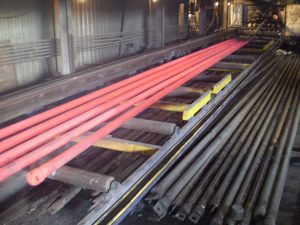
Dakota Access pipeline protest has already become Keystone XL sequel – promises to be bigger and worse for industry
Last weekend, someone burned construction equipment at an Iowa site of the halted Dakota Access pipeline project. A blazing bulldozer is the perfect metaphor for the raging tire fire that is industry’s handling of what has become the next big target for the eco-activist movement.

Don’t take my word for it. Mark Trahant, a University of North Dakota journalism professor, has been covering the protest since the story erupted over the Labour Day weekend, when security guards set attack dogs on Standing Rock Sioux protestors angry that the construction company bulldozed a tribal burial site.
A small crowd enraged at the callous action of the construction crew quickly swelled to a protest village of over 4,000, as Native Americans from all over the United States flocked to support the Sioux. They were joined by eco-activists eager to continue the fight against oil companies that lost momentum last year after President Barack Obama rejected TransCanada’s Keystone XL pipeline.
Then Canadian First Nations joined in an alliance with the Standing Rock Sioux, bringing valuable organizational and political resources to the fight. Then Climate Direct Action members shut down five pipelines carrying Canadian oil to US pipelines, claiming solidarity with the Sioux. They were arrested and mainstream environmental groups and leaders like Greenpeace and Bill McKibben of 350.org issued statements of support and joined in the fund raising for their legal defense fund.

The Climate Direct Action pipeline tampering is violence masquerading as civil disobedience and represents a new phase of eco-activist opposition to the North American oil and gas industry.
But as much as we condemn Climate Direct Action and their allies, there is also blame to be heaped on the pipeline owner (Energy Transfer Partners), law enforcement and politicians, and energy industry leaders.
Trahant says the standard – and correct – response in a confrontation of this type is to de-escalate the tensions: reach out and engage. Begin a dialogue. Try to find common ground. Resolve the most obvious grievances. Work toward a solution.
And try really, really hard not to make more enemies.
In other words, not rocket science. Just a common sense approach to resolving conflict.
And the exact opposite approach used by the company and its supporters. From the beginning, everyone on the industry side has played hardball:
Jack Gerard, CEO of the American Petroleum Institute, and unions representing workers building Dakota Access, publicly called for the rule of law to be respected. In other words, dismissing Standing Rock Sioux concerns and supporting enforcement of penalties over negotiation. “I think that [approach] acutely increases the pressure on them [protestors] to stay in line and to keep hold of where they’re at. It’s not breaking them apart as you would think,” says Trahant.
Pipeline owner Energy Transfer Partners bought more than 6,000 acres of land adjacent to the line’s route in North Dakota. Federal regulators don’t have authority over private land. The strategy did nothing to dampen protestors’ resolve.

Left-leaning journalist Amy Goodman of Democracy Now was arrested and charged with misdemeanor rioting, dropped on Monday by a North Dakota judge, for filming the dog attacks on the protestors. Other protestors have been charged with increasingly severe crimes. But “by increasing the criminal statute, it makes prosecution less feasible,” says Trahant. “For example, pulling a riot charge, if you’re able to get a conviction that certainly would be something that could dampen the enthusiasm. But already they’re losing on the criminal trespass so it’s even going to be more difficult to prove the more severe charges.”
North Dakota Petroleum Council President Ron Ness paid lip service to “meaningful and open-minded discussions with tribal governments” in his comments about the protest, but stressed the primacy of the pipeline review process and the importance of the pipeline “to our nation’s energy future and is in the best interest of the state and nation.” In other words, industry is not giving an inch.
Today, the standoff continues.
Even as snow swirls over the Prairie, protestors are digging in for the long haul. “People are ready to stay through winter,” said Allyson Two Bears, who sits on the Standing Rock Sioux’s emergency response team.
The federal government has shut down construction while it seeks a political solution. Bernie Sanders and four other senators are calling upon Obama to order a new review of the project. “The project’s current permits should be suspended and all construction stopped until a complete environmental and cultural review has been completed for the entire project,” said the letter by Sanders and Democratic Senators Dianne Feinstein, Ed Markey, Patrick Leahy and Benjamin Cardin.
Trahant says conducting another review would defuse the situation somewhat, “but there’s been resistance to go that route” because of the time it would take.
In the meantime, what started as a local protest is being infused with the same ideas that so animated the Keystone XL protests: linking pipelines to climate change and greenhouse gas emissions, arguing there is already excess capacity and a new pipeline is not needed, and the notion that oil and gas resources should be kept in the ground and not extracted.

The Dakota Access protest is the sequel to Keystone XL for the American – and increasingly, Canadian – environmental movement.
And with the prospect of another Democratic administration taking power in January, with Hillary Clinton’s strong ties to Sanders ready to be exploited by politically savvy eco-activists, there is little incentive for protestors to de-escalate the situation.
In fact, says Trahant, the incentives are all in the opposite direction. He expects more and more civil disobedience as the dispute drags on.
Industry has “a fundamental misunderstanding of civil disobedience. They keep seeing this is a First Amendment issue,” says Trahant. “They haven’t quite figured that out yet.”
If industry doesn’t figure it out in a hurry, expect the Dakota Access pipeline protest to grow and breathe new life into the American anti-energy infrastructure movement.
And to think, all of this might have been avoided with a bit more sensitivity about a Native American burial ground and a more effective crisis communications response when the protests began.


Well said, Markham!